‘Mindfulness’ is one of the secrets of famed Tibetan longevity. This means to spend time ‘in the moment’ and not worry about the past or the future. Living in the here and the now. Mindfulness helps optimise the different senses; the focus is on what one is seeing, hearing, smelling, touching or tasting at any time. This ‘immersion’ has been known to reduce stress vastly – which in turn adds to the years. Mindfulness takes dedicated practice in preferably quiet surroundings with a salubrious climate. The Tibetan Monastery in Mainpat may not exactly be swarming with serene-faced followers of the Buddha, shaven heads bent over endless cups of salty butter tea like in other busier monasteries. But here on early mornings and late afternoons, one still comes across the calming low drone of mass chanting resonating through hallways, the tranquil array of monks in meditation and the young novice’s muted giggle at a tourist trespass.
When the Dalai Lama fled Tibet in 1959 following the Chinese invasion, thousands of Tibetans too followed him across the border into India. The exodus was to continue for several more years into the early 60s through the wake of the Indo-China war of 1962. The government of India settled the fleeing Tibetans in refugee camps across the country like Bylakuppe, Karnataka in the south to Dharamshala, Himachal Pradesh in the north. Mainpat in Sarguja, the district in northern Chhattisgarh, is among the lesser known of these resettlement areas though it was established as early as 1963. One version of the origins of the settlement is that when the Government of India, on the request of the Dalai Lama, was looking for a place to bring together the Tibetans spread all over the country. The hilly north of present day Chhattisgarh perched at 1,100 metres was identified as suitable and the government of Madhya Pradesh (of which Chhattisgarh was a part of) gave 3000 acres of the plateau for the resettlement colony. Yet another version by the locals credits a group of Tibetan refugees who were working at a road construction site in Sitapur (on the way to Bagicha and Jashpur from Mainpat) who visited Mainpat hearing about its cooler climate. They were enamoured by what they saw – the waterfalls and the streams, the dense sal forests and the mountains – and requested the state and central governments to allot land for them and their families.
The early settlers worked very hard clearing the dense foliage for agriculture. They also set up manufacturing units of hand-knotted carpets and sweaters which were Tibet’s traditionally famous exports. Cattle and sheep rearing met with little success. But they imported farming techniques from their erstwhile homeland and experimented successfully with crop rotation. Eventually they zeroed in on potato and tau or buckwheat as crops most suited for the soil and the weather. The carpet industry has declined and is today almost at a standstill but agriculture continues to thrive: Mainpat potato enjoys a reputation for its succulence, adds considerably to the gobsmack-value of the samosas and masala dosa served in the dhabas in and around Mainpat. Partially owing to a drastic reduction in the manpower available for agriculture and in part because of unscientific methods employed, the past decade witnessed a reduction in the acreage dedicated to potato cultivation from 10,000 to 1,000 hectares. In 2013, the state government opened a potato research centre in Mainpat to tackle some of these problems. Besides research and development it also trains the farmers in better farming methods and also distributes quality seeds.
However lack of modern economic enterprise continues to drive the young and ambitious Tibetan out of Mainpat to bigger cities in search of more lucrative employment. The majority of Tibetans one sees in Mainpat are the elderly ones and the children. “The educated ones as well as those who are young and capable of travelling are in Delhi, Bombay or Kochi selling woollen products,” says Kelsang Gyatso, the general secretary of the Phende Ling settlement cooperative society. When it was started there were 1,400 settlers and 50 years later it has not gone much over 2,000 because of the migration among the youth. The Tibetan settlement is spread over seven camps covering over a 25 km radius with an average distance of 5 – 6 km from each other. Population pressures and encroachments have resulted in a slightly fricative if not exactly tenuous relationship between the locals and the Tibetans; rows over land have erupted in the recent past.
Tourism hasn’t made much impact on Mainpat as is evidenced by the far and few hotel and eateries. Though the 62 plateaus make for some exciting couloirs and escarpments overlooking some of the finest landscapes in the state, there aren’t many providers for adventure activities like trekking or mountain biking.
From the main Tibetan settlement camp a broad path, reddened by the natural oxide content of the earth, leads to the Dhakpo Monastery (or just ‘Tibetan monastery’ if you are asking the locals). Multi coloured flags on the right side of the pathway flutter in the wind sending prayers heaven-ward while on the left are hulking residences trying to look discreet behind mud walls. The Phende Ling community hall and the administration offices of the settlements come a little ahead. If you want to gain a hassle-free access to the monastery, it would be better to get somebody to accompany from the office. Not that the monks at the monastery are any unpropitious but language barriers can give rise to uncomfortable radio silences. A picture of the Dalai Lama is placed at the altar and is surrounded by images of the Buddha and burning candles. A slightly rancid smell, possibly of all the butter tea consumed within the enclosure, permeates the hall. A strange sense of peacefulness and calm descends like an old, mouldy but favourite blanket.
Other attractions around Mainpat: ‘The earth here shakes.’ The signboard cheerfully announces in Hindi. True enough, the score-odd students who have come from Andhra Pradesh are giving Jumping Jack a run for his money on the open field which is called ‘Jaljali’ translated to ‘earthquake.’ True enough, enthusiastic tour guides put forth an irresistible offer: “In case you’ve never been through an earthquake, here is your chance to not just go through one but create one.” If you are looking for acknowledged spots for viewing Mainpat scenery, there is Mehta Point. But keep away from the concrete monstrosities, including umbrellas and benches, coming up in the name of tourism infrastructure – Mehta Point has developed into an enclosure more than a point – if you want to enjoy the view in peace. A few kilometres from Mehta Point, comes the Bear Point; from here there are some faintly marked trails that go down to the valley below via a few caves which used to be a regular haunt of bears. Nothing to worry, no local was able to remember the last time a bear was spotted in these parts. The Tiger Falls is on the way to Kailash Gufa; the Gufa itself is a series of caves tucked beneath escarpments, an on-and-off ashram. Concrete steps with steel balustrade go all the way down to the bottom of the waterfalls which traces a silvery cascade from 60 metres high. Vehicle entry to Tiger Falls is Rs 20. Reaching the Machali Point is one backbreaking haul but recommended if you are an avid angler; ‘machali’ means ‘fish’ by the way. There is a waterfall called ‘Machali Falls’ (what else!) and the pretty scenic Machali River where you can join the locals in a spot of fishing. The water is full of fish; party time for ‘Naked and Afraid.’ The Milky Way is another waterfall nearby Machali Point so called for obvious reasons.
Once you are done visiting all the sights, take some time out for a not-so ritual walkabout around Mainpat, befriend the garrulous lady at the grocery store, take photographs of the little monk manoeuvring the discarded motorcycle tyre with intense focus and expertise. Stroll through the vast expansive tracts alternately used for farming and for the annual carnival – it looks like land’s end when viewed from the road. There are many ponds too, characteristic of Chhattisgarh. Spend a quiet evening by the banks of one watching the rippled reflection of the boughs in the water.


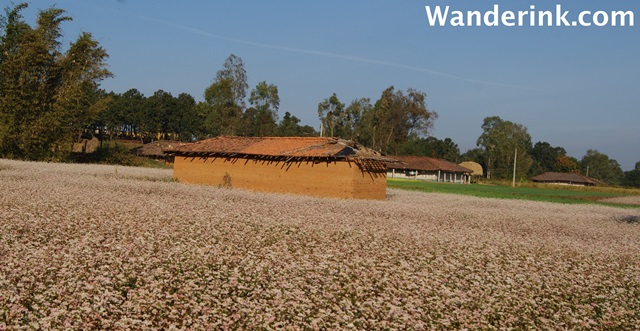
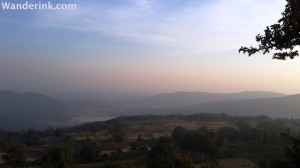
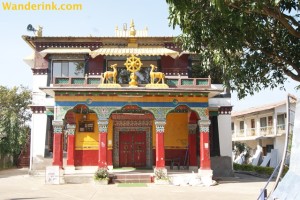
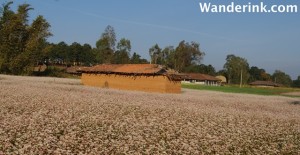
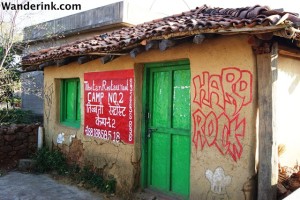
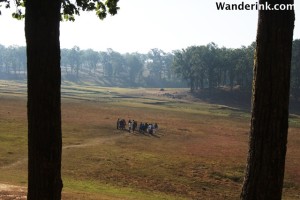
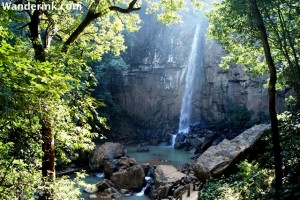
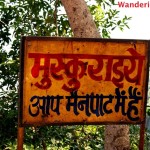









Amazing. I had never heard of this place. I didn’t know their was a Tibetan colony in MP. Where did you stay?
Erstwhile MP, Chhattisgarh today. There is a state-owned Shaila Tourist Resort here. Give it a visit, worth it.